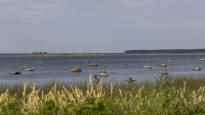Tourism in Estonia is recovering from the corona crisis, and Finns have returned to their favorite destination. For many, Estonia is just like the tourist crowd of the old town, but the nature of Estonia, for example, can surprise a Finn.
Many Finns may think that Estonia is not only related to Finland but also like Finland.
But no – for example, nature is quite different from ours. This is what a nature enthusiast and guide says Mikko Virtawho has also written a book on the subject, Luontoretkelle Estonia.
The southern location of Finland can be seen, for example, in the range of bird species, and the Soviet era has left part of the land area untouched, i.e. in a natural state. In addition, the Estonians’ relationship with nature is rooted: they go to the bogs to be quiet, and folk medicine can be used for help with illnesses.
In this article, five things about Estonia and Estonians’ relationship with nature have been collected that might surprise a Finn. Virtra’s interview and her book have been used as sources.
Listen as nature guide Mikko Virta reveals in an interview what he thinks are the best nature spots in Estonia:
1. Swamps
Four years ago, the Estonian daily Postimees asked what best symbolizes Estonianness. Swats were voted the overwhelming number one – yes.
There are guided trips to the bogs all year round, in the winter with kick sleds or snowshoes, or should they be called bog shoes in this context? You can even go for a dip in salt marshes.
In addition to cranberry and jam trips, Estonians go to the marshes to calm down and enjoy the peace of nature. They are also associated with stories and beliefs that tell about buried treasures and bonfires.
A large number of undrained bog areas have been preserved in Estonia. A convenient destination for Finnish tourists could be, for example, Lahemaa National Park, about an hour’s drive east of Tallinn.
Established in 1971, the national park is Estonia’s first – and it was once also the first national park in the entire Soviet Union.
2. Wolves
The wolf is the national animal of Estonia. The attitude towards wolves is very different in the country than in Finland, in Estonia the wolf has not become the object of such confrontations.
The wolf has no less than 500 different nicknames in Estonian, just as the bear is sometimes also called honey palm, forest apple or otso. A valued characteristic of wolves is that they are loyal to their pack.
Estonians consider wolves to be tough survivors, i.e. somewhat similar to themselves. If you’re lucky, you can come across wolves in, for example, Sooma, or Swamp National Park, where a few wolf packs live.
3. Holy places, such as holy springs
In Estonia, a country religion that cherishes nature and old traditions, as well as various folk beliefs, has been preserved. It is customary to seek spiritual support from, for example, a holy source in the event of illness or other grief. There are also guide books for this purpose in shops, you can definitely find your way with the help of maps.
In addition to springs, stones and trees are also often sacred places.
The deep-rooted connection to tradition can also be seen in folk medicine: in pharmacies you can buy, for example, spring primrose tea for flu symptoms. Even doctors may recommend these methods of folk medicine, either alongside or instead of modern medicine.
4. Islands
Those who have traveled to Tallinn by ship have seen the islands in front of the city, but how many know them?
Aegna, Naissaari and Prangli offer almost untouched nature, because for strategic reasons they were an area forbidden to civilians during the Soviet era. The island of Aegna was already a military area during the tsar’s time, so in addition to untouched forests, there is military history there.
Naissaari is also wooded, and there are also exciting military historical sites, including part of the chain of Peter the Great’s sea defenses.
Naissaari’s most exotic transportation game is probably its own train and a 40-kilometer-long railway, which was started to be built during the Tsar’s time. A few kilometers of the railway have been renovated, so visitors can also board the train.
Prangli, on the other hand, is Estonia’s northernmost year-round inhabited island, which attracts visitors especially on weekends.
There is a ferry connection to the islands in summer and early autumn, there is a ferry connection to Prangli all year round.
5. Beaches
Estonia has a huge amount of undeveloped and free seashore. That too is based on the military strategic reasons of the Soviet Union: ordinary people had no interest in the area.
After gaining independence, the Estonians were so smart that they forbade the construction of beaches, and thus they remained for the common joy of all. According to the rights of every man in Estonia, everyone has the right to walk along the beaches without obstacles.
There are more than 3,700 kilometers of coastline. Destinations worth seeing can be found right in the vicinity of the capital Tallinn within a bike ride, so you don’t always have to drive to Pärnu, famous for its sandy beaches.
In addition, Lake Peipsijärvi, Estonia’s largest lake, has the country’s longest lake – no less than 30 kilometers.
Even otherwise, the fifth largest lake in Europe is an exciting sight, because in its southern part you can look at the Russian islands on the opposite shore from the observation tower. It may also be that the Russian border guards are watching back.
What do you think is a destination worth visiting in Estonia? Share your tip – the discussion is open until Sunday, August 21, until 11 p.m.
